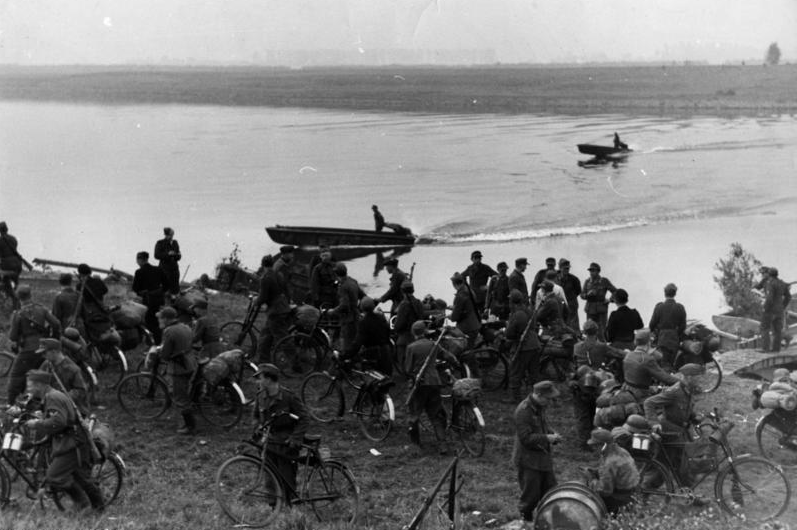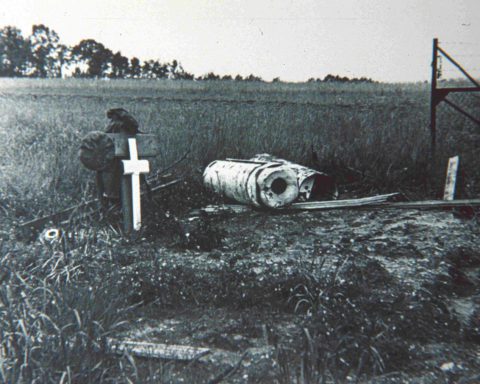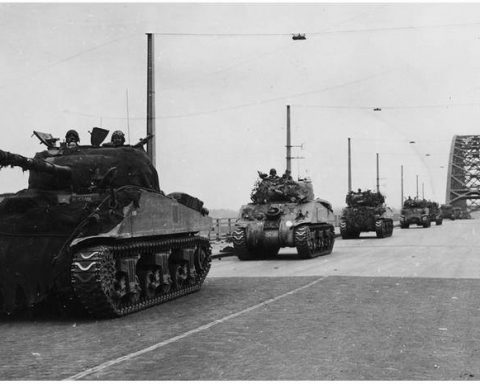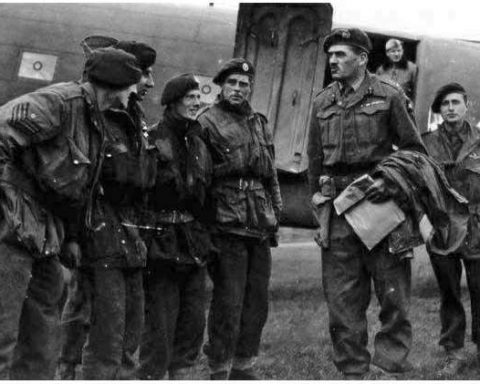When it comes to the mistakes made during the Battle of Arnhem, it is often only about the British blunders. And rightly so, because there are quite a few. What receives much less attention is that a few major mistakes were also made on the German side during the course of the fighting.
Waal Bridge not blown up
The first major mistake is that Field Marshal Walter Model chose not to blow up the Waal Bridge near Nijmegen. If the Germans had done this, the Allies would never have managed to cross the Waal and relieve the British 1st Airborne Division in Oosterbeek and the Poles who landed on Thursday, September 21.
Without an available bridge, the wide Waal would most likely have been a barrier for the Allies that they would not have been able to overcome. Even with a bridgehead on the north side of the river, it would have taken the Allies days to build a bailey bridge over the Waal, while the engineers who had to do this would have been an easy target for the Germans in the open river landscape.
So there’s every reason to blow up the Waal Bridge, you might say. But on the orders of the highest German military officer in the region, that did not happen.
After the airborne landings in the afternoon of Sunday, September 17, 1944, the Germans quickly realized what the purpose of the Allied airborne landings was: to push through the Dutch rivers to Arnhem and from there turn right to the Ruhr area.
As early as 3 p.m., while the airborne landings were still in full swing, Model consulted with German General Wilhelm Bittrich about the best way to stop the Allies. Bittrich commanded the 9th and 10th SS armored divisions. His troops were already on their way to Arnhem from Apeldoorn, Zutphen and Dieren.
Bittrich proposed blowing up the Waal Bridge near Nijmegen to deny Allied troops access to Arnhem. But Field Marshal Walter Model wanted nothing to do with it. According to Model, the Germans needed the bridge for a counterattack to the south.
Model wanted Bittrich’s 10th SS armored division to be sent to Nijmegen to hold the bridge for the Germans. Reinforcements would then arrive to further push the British and Americans back in a major counterattack.
However, this plan went wrong. The only German troops who managed to reinforce the Waal Bridge on Sunday, September 17, were a number of armored cars from the 9th SS-Aufklärungs-Abteilung. This was a reconnaissance battalion that was sent south over the Rhine bridge by Bittrich to see whether paratroopers had also landed between Arnhem and Nijmegen.
The reconnaissance battalion, led by Hauptsturmführer Viktor Gräbner, left a few armored cars at the Waal Bridge. They took action within a few hours to repel a cautious attack by the Americans.
In the evening of Sunday, September 17, John Frost’s battalion managed to occupy the north side of the Rhine Bridge. This meant that the Germans had difficulty transporting reinforcements from the 10th SS armored division to Nijmegen. In the morning, British bombers had also bombed the pedestrian ferries at Huissen and Angeren, meaning that no crossings over the Rhine were available. Soldiers were transferred using motor boats, but transferring artillery and tanks was very difficult.
This enabled the Americans to capture the Waal Bridge unscathed on Wednesday, September 20, after a heroic crossing in canvas boats. The Germans did try to blow up the Waal Bridge when the first British tanks rolled over the Waal Bridge. Probably as a result of the heavy fighting, the wiring of the explosives was most likely hit. That’s why the bridge didn’t explode. Allied soldiers, meanwhile, were immediately busy removing the explosives from the bridge.
The planned German counterattack across the Waal did not materialize. But because the Germans had now defeated John Frost’s battalion in Arnhem, they were immediately able to send troops and tanks in the direction of Elst. The Allied advance was stopped here by the Germans in the days that followed.
However, British and American troops were able to come to the aid of the British at Oosterbeek via Valburg and Driel.
The underestimation of the British at the bridge
A second mistake by the Germans was the underestimation of the striking power of John Frost’s battalion at the Rhine Bridge. That miss resulted in the almost total destruction of Viktor Gräbner’s 9th SS-Aufklärungs-Abteilung.
Almost all the tanks of the 9th and 10th SS armored divisions had been destroyed by the British in France. The approximately forty half-tracks and armored cars of Gräbner’s reconnaissance unit were the strongest unit the Germans had in the Arnhem area at the time of the airborne landings.
Of the approximately forty vehicles of the German reconnaissance unit, approximately ten were sent towards Oosterbeek immediately after the airborne landings on Sunday, September 17, where they were very effective in stopping the British advance towards Arnhem.
As previously reported, Gräbner himself had combed the area between Arnhem and Nijmegen with the other vehicles in search of Allied troops. Gräbner received the order from General Bittrich on the morning of Monday, September 18, to return to Arnhem and strengthen the Sperrline on the west side of Arnhem.
The Germans knew that the north side of the Rhine Bridge was occupied by British paratroopers, but the Germans did not think that the lightly armed British could do much against the German armored column. That was a costly mistake.
Standing in the British Humber Staffcar that he had captured in France a month before, Gräbner signaled around 9:30 am for the 22 vehicles of the German armored column to race across the bridge at high speed.
The column of the 9th SS-Aufklärung-Abteilung crossed the bridge at high speed, but had to slow down on the north side. There were a few burnt-out German trucks that had been fired upon by the British the night before.
The British still had not opened fire. They waited for the moment when the leading German armored cars would drive over the anti-tank mines on the bridge. To the surprise of the British, the mines did explode, but that did not seem to have much effect on the armored cars. The leading four cars of the German column drove as quickly as they could down the bridge ramp towards the city center of Arnhem.
With everything they had, the British then opened fire on the wagons that followed. It became a massacre.
The British were much better armed than the Germans had thought. John Frost’s men not only had PIAT anti-tank guns at their disposal, but also a few 75mm anti-tank guns. In addition, the airborne soldiers from the houses were able to easily throw hand grenades into the open German half-tracks.
After the leading vehicles had left the convoy and blocked the road for the vehicles behind them, one German vehicle after another was eliminated.
The fighting lasted about two hours in total. Almost the entire column that had crossed the bridge had been stopped and destroyed by the British. The number of Germans killed in the attack is estimated at around seventy.
It was a costly mistake for the Germans. It did ensure that the Germans became more in awe of the striking power of the British soldiers. Certainly the attacks on the British positions at the Rhine Bridge were handled much more carefully in the future.







